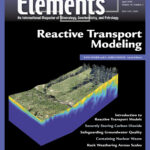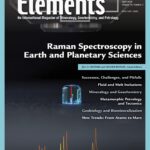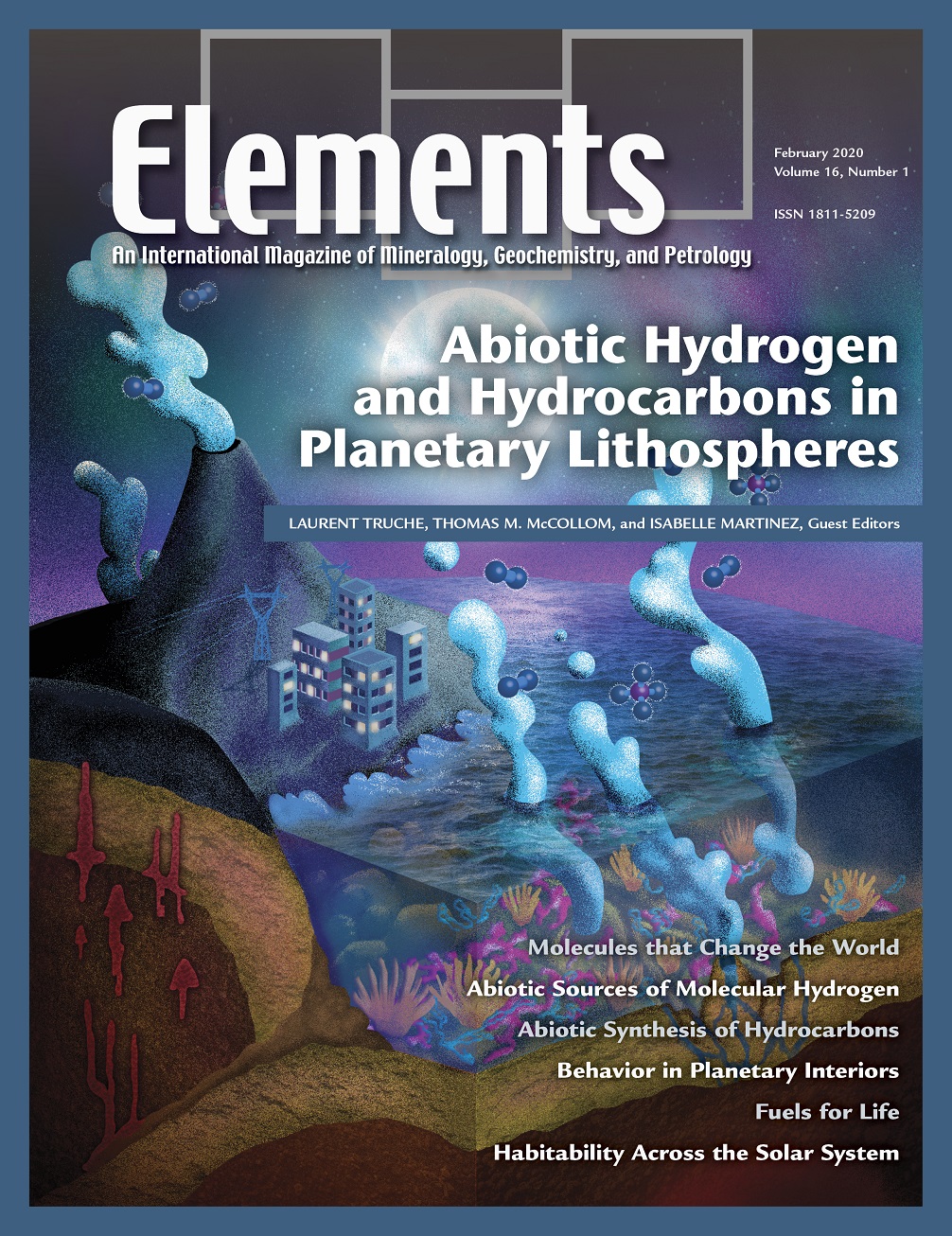
Reactive Transport Modeling, April 2019, Vol. 15, No. 2
June 28, 2024
Raman Spectroscopy In The Earth And Planetary Sciences, April 2020, Vol. 16, No. 2
June 28, 2024Abiotic Hydrogen And Hydrocarbons In Planetary Lithospheres, February 2020, Vol. 16, No. 1
$20.00
Molecular hydrogen (H2), methane, and hydrocarbons with an apparent abiotic origin have been observed in a variety of geologic settings, including serpentinized ultramafic rocks, submarine hydrothermal vents, and deep fractures within ancient cratons. Recent discoveries have reported the presence of hydrogen emanating from the icy crust of Saturn’s moon Enceladus, and methane in the atmosphere of Mars.
Abiotic Hydrogen And Hydrocarbons In Planetary Lithospheres
February 2020, Vol. 16, No. 1
Molecular hydrogen (H2), methane, and hydrocarbons with an apparent abiotic origin have been observed in a variety of geologic settings, including serpentinized ultramafic rocks, submarine hydrothermal vents, and deep fractures within ancient cratons. Recent discoveries have reported the presence of hydrogen emanating from the icy crust of Saturn’s moon Enceladus, and methane in the atmosphere of Mars. Owing in large part to the utilization of hydrogen and methane by chemosynthetic biological communities on Earth (and maybe other planetary bodies), geologic production of these compounds has become the subject of intense scientific study. Geologically produced hydrogen and methane are also of interest as possible energy resources. This issue highlights recent developments in the understanding of geologic sources of hydrogen and methane, the biological utilization of these compounds, and the potential for human exploitation of these resources.
Why You’ll Love Elements Magazine:
- Expert Contributors: Articles written by renowned researchers in the field of geoscience.
- Engaging Content: Join a community of readers who are passionate about Elements.
- Exceptional Quality: Each issue is printed on high-quality paper with stunning visuals and detailed illustrations that bring complex scientific concepts to life.
Order your copy of the February 2020 issue of Elements magazine today and delve into abiotic hydrogen and hydrocarbons in planetary lithospheres.
Related products
-
Zircon – Tiny But Timely, February 2007, Vol. 3, No. 1
$20.00Where would Earth science be without zircon? As Earth’s timekeeper, zircon has proven to be a remarkable and versatile mineral, providing insights into deep time and ancient Earth processes. However, there is still much to learn about Earth’s history from zircon and its behaviour.
-
Diamonds, March 2005, Vol. 1, No. 2
$20.00Diamond, the fascinating ultrahard mineral, is the focus of considerable interest and scientific research. Recent advances particularly relevant to geoscientists include: diamond as a recorder of Earth processes from the perspective of inclusions, chemistry, and conditions of formation; synthesis for research applications and processing to modify color and physical properties, important to diamond gems and anvils; the implications of nanodiamonds from meteorites.
-
The Nuclear Fuel Cycle – Environmental Aspects, December 2006, Vol. 2, No. 6
$20.00Increasing concerns for the effects of global warming that result from rising greenhouse gas concentrations in the atmosphere have led to a reexamination, even enthusiasm, for nuclear power. Of all the current alternatives to fossil fuels, nuclear fission is the most important source of energy, accounting for 17 percent of the world’s electricity.




